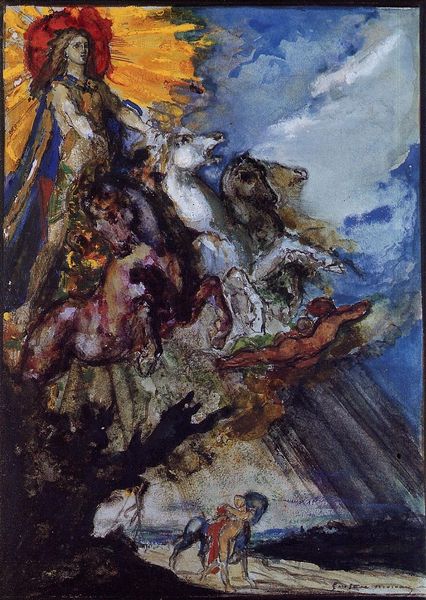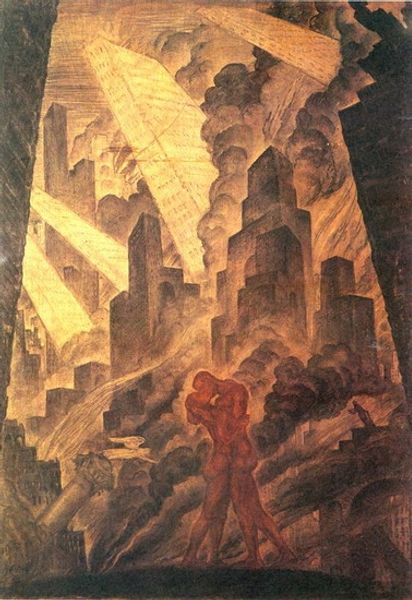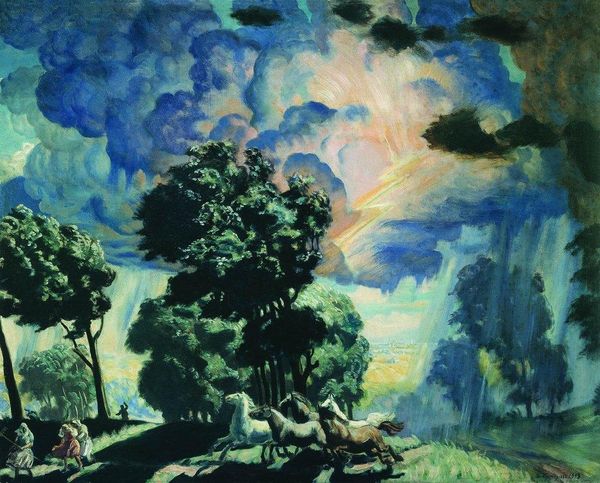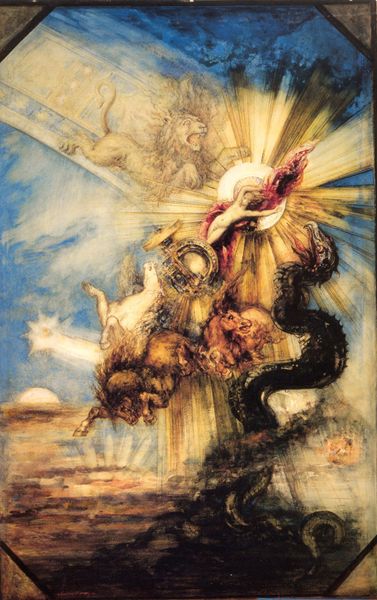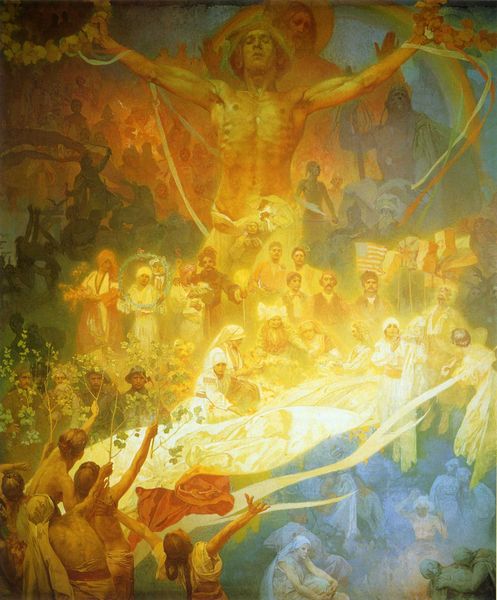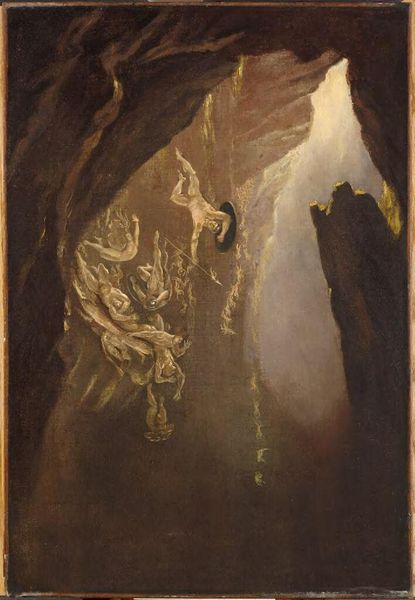
Copyright: Public domain
Curator: Standing before us is Vilmos Aba-Novak's "The Light," painted in 1926. It currently resides in a private collection, offering a rare glimpse into his expressionist style. Editor: Wow, there’s such drama in that light source! It immediately grabs your attention and seems to pour down onto those laborers in the foreground. Curator: Precisely. Consider how the rapid brushstrokes build up the layers of color. You can practically feel the thickness of the oil paint itself, especially around the area where we see those three figures. I'm curious about the production aspect--how did Aba-Novak source the specific pigments, and were there economic or political factors that might have affected their availability, as that's critical. Editor: The materiality is interesting, and you're right to call it out, but the light almost obscures those details, wouldn’t you say? For me, the painting invokes questions about power, the labor of rural communities, and what is often extracted from such demographics. How are we implicated in such dynamics? Curator: That interplay of light and figures does guide us to questions of representation, power, and the conditions of artistic production under capitalism. Aba-Novak’s visible brushwork shows the physical act of applying each paint stroke, and each layer transforms into labor. This relates back to your previous point in turn. Editor: It seems almost impossible not to connect this depiction of laborers, bathed—or perhaps even weighed down—by this all-consuming light, to larger socio-political dialogues of that period. Curator: Absolutely, if we look closely at how other expressionist works by Aba-Novak incorporated such raw pigments and brushwork to tackle themes tied to peasantry, agricultural output, and material production, that helps in contextualization here. Editor: Seeing it framed through the lens of contemporary sociological and intersectional theories highlights uncomfortable, relevant tensions—forces still prevalent in our present world. Curator: The genius is how those tangible components transform into something much more provocative; it is far from simple optical imitation. Editor: And that’s why artworks such as “The Light” push beyond mere aesthetics. The artwork sparks crucial conversations about our relationship with art, its creation, and, ultimately, how society functions as a whole.
Comments
No comments
Be the first to comment and join the conversation on the ultimate creative platform.

